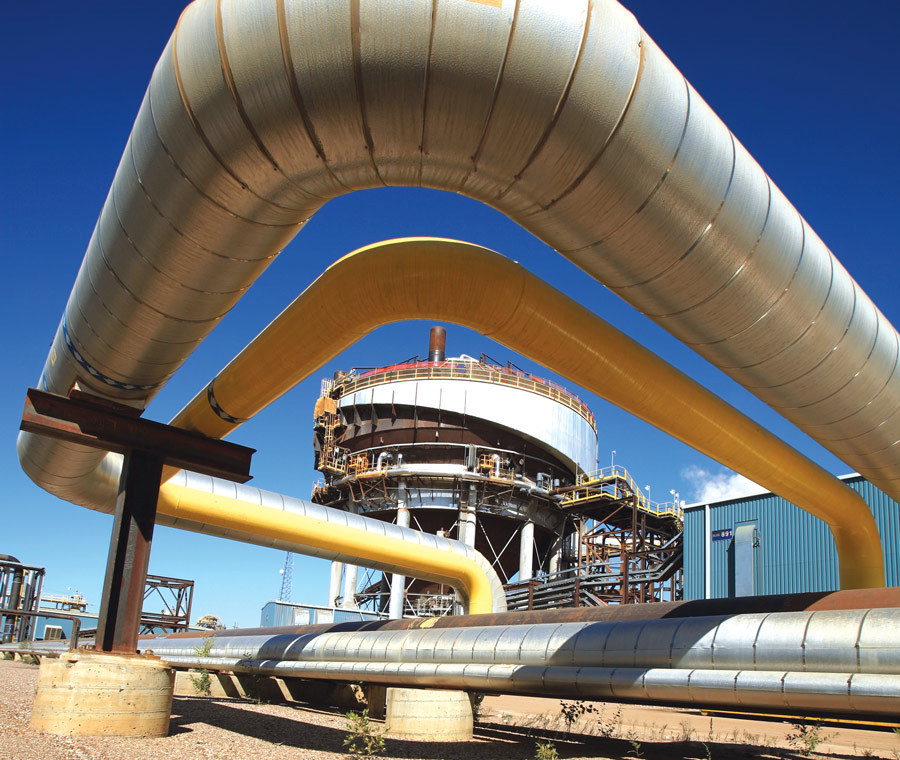 As economic activity starts back toward pre-pandemic levels, both intermediate refining demand for crude oil and end-market consumer demand for oil products remain depressed, says Matt Epstein, managing director for Clearview Geospatial. “Demand is off 15 percent year over year. International supply cuts by OPEC+ and domestic production declines—expected to average about 1.1 million barrels of oil per day—continue to chase falling demand,” he says.
As economic activity starts back toward pre-pandemic levels, both intermediate refining demand for crude oil and end-market consumer demand for oil products remain depressed, says Matt Epstein, managing director for Clearview Geospatial. “Demand is off 15 percent year over year. International supply cuts by OPEC+ and domestic production declines—expected to average about 1.1 million barrels of oil per day—continue to chase falling demand,” he says.
Over the summer, the U.S. Energy Information Administration forecast a decline in U.S. gross domestic product of 7.4 percent in 2020 because of efforts to combat COVID-19. “As a result of the effects of travel restrictions and stay-at-home orders on the U.S. economy, EIA forecasts that domestic consumption of petroleum liquids will decrease with gasoline consumption falling by nearly 13 percent in 2020 and diesel decreasing about 10 percent.”
Most notably, however, the EIA projects that the most significant declines are behind us and that, going forward, domestic consumption of petroleum liquids is expected to rise in the next 18 months.
Since April, IHS Markit reports that world oil demand has grown at a record pace, by 13 million barrels per day between April and August 2020. Global crude demand increased between May and July as more COVID-19 restrictions eased. However, travel, which propels much of the increase or decrease in oil demand, is expected to remain stagnant until COVID-19 is contained and vaccines are widely available.

Major fracturing companies are consolidating, including Schlumberger’s exit announcement on Sept. 1 by way of a planned merger between its OneStim unit with Liberty Oilfield Services.
“The boom in domestic pipeline infrastructure driven by growing production in shale oil basins such as the Permian, Eagle Ford and Bakken is effectively over,” Epstein says. “We expect cost-cutting and consolidation to be the predominant themes in the oil and gas industry for the balance of 2020 and 2021.”
According to the International Energy Agency (IEA), the first quarter of 2020 pushed down global energy demand by 3.8 percent. “If lockdowns last for many months and recoveries are slow across much of the world, as is increasingly likely, annual energy demand will drop by 6 percent in 2020, wiping off the last five years of demand growth,” according to the IEA’s Global Energy Report, April 2020.
With oil and gas prices at all-time lows, renewable technologies are less cost-competitive as a result. “[That] potentially leads to the postponement or cancellation of planned investments in this area, especially in the absence of stronger policy action,” according to the IEA’s report tracking clean energy progress during COVID-19.
However, not all is lost in the renewables sector as Deloitte’s Midyear 2020 renewable energy industry outlook foresees continued fluctuations in demand. “As of mid-June 2020, daily electricity demand has fallen in the range of 2 to 17 percent year over year, with considerable regional variation,” according to the Deloitte report.
Renewable energy sources continue to outpace coal and most power system operators are managing increased shares of wind and solar power, “making the pandemic a good test case for future grid reliability with higher renewable energy penetration.”
Coal demand continues to decline and states are revising legislation to promote renewable energy. For example, the state of Virginia mandated a 100 percent renewable portfolio standard by 2050.
“[The metals industry] should position for an extended period of difficult market conditions,” Epstein says, noting that global economic activity will most likely not fully reach pre-pandemic levels before 2022.
Two areas of potential opportunity include housing and electricity infrastructure. “Homebuilding, as a result of lower interest rates and a continued move-out of high-density cities to less dense suburbs,” he says. “And electricity infrastructure, as destructive weather has become more common.”
